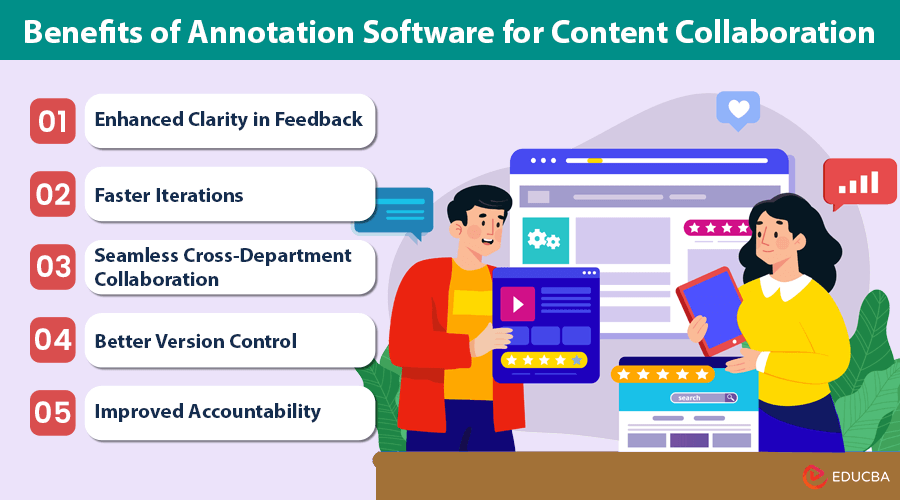
Introduction to Annotation Software for Content Collaboration
Crafting an effective content strategy is more than just a creative exercise. It requires seamless collaboration, efficient processes, and the flexibility to adapt quickly. Content teams today face challenges such as aligning cross-departmental goals and managing constant feedback loops. To address these challenges, tools like annotation software for content collaboration are invaluable in enhancing communication and streamlining workflows.
Building the Foundations of a Strong Content Strategy
A successful content strategy begins with the following:
- Understanding the Target Audience: Knowing their needs, preferences, and pain points.
- Aligning with Business Objectives: Ensuring content supports overarching goals.
- Identifying Platforms: Recognizing where the content will live and engage audiences.
These elements set the stage for creating impactful, cohesive content. However, executing the strategy often involves input from multiple contributors, such as writers, editors, designers, and marketers. Without clear feedback mechanisms, collaboration can falter, delaying timelines and compromising quality. This is where annotation software for content collaboration plays a crucial role.
The Role of Collaboration in Content Success
Collaboration is key to creating great content. Whether brainstorming ideas or refining drafts, the process thrives when every team member has the tools to share insights effectively. Agile content strategies, in particular, require teams to adapt quickly to feedback without losing momentum.
Annotation Software for Content Collaboration facilitates this by:
- Providing a shared platform for real-time feedback.
- Allowing stakeholders to add contextual comments directly onto content.
- Eliminating the ambiguity often associated with vague feedback.
By centralizing feedback, annotation tools ensure everyone stays aligned and focused on achieving the shared goals.
Agile Approaches to Content Development
Agile methodologies, rooted in software development, are increasingly popular in content creation. These principles emphasize:
- Flexibility to adjust to changing priorities.
- Iterative Improvements for continuous enhancement.
- Rapid Response to Feedback to maintain momentum.
Annotation software aligns perfectly with this approach. For example:
- Teams can highlight specific sections needing revision without affecting the rest of the document.
- Incremental changes ensure adaptability without overhauling the entire strategy.
This agile approach helps content teams respond efficiently to new campaigns or evolving audience needs.
Practical Benefits of Annotation Software for Content Collaboration
While the core of content strategy revolves around audience insights and messaging, annotation tools address practical execution challenges, such as:
1. Enhanced Clarity in Feedback
Reviewers can link comments to specific content sections, reducing miscommunication and ensuring precise implementation.
2. Faster Iterations
Centralized comments and real-time tracking streamline the revision process, minimizing delays caused by scattered feedback.
3. Seamless Cross-Department Collaboration
Annotation tools bridge gaps between marketing, design, product, and leadership teams, ensuring smooth workflows.
4. Better Version Control
With all comments and updates stored in one place, it is easier to trace changes and revisit decisions.
5. Improved Accountability
Features like task assignments and deadlines keep teams organized and accountable, especially for larger projects.
Elevating Content Strategy Through Better Tools
At its core, content strategy aims to create meaningful, engaging material that resonates with the audience. While annotation software for content collaboration is not the focus of the strategy, it acts as a vital enabler.
For instance, when finalizing a whitepaper or launching a marketing campaign, annotation tools simplify the review process. Teams can work within a unified interface, ensuring that every detail aligns with their strategy without juggling multiple platforms or unclear instructions.
By enhancing communication and efficiency, these tools allow teams to focus on delivering high-quality, impactful content.
Final Thoughts
Content strategy is both an art and a science, requiring creativity, organization, and collaboration. While the strategy’s foundation lies in understanding the audience and aligning content with business goals, tools like annotation software for content collaboration make the process more effective and efficient.
From streamlining feedback to improving accountability, annotation tools empower content teams to navigate complexities and adapt to changing priorities. By using these tools in their workflows, teams can stay agile while keeping their strategy intact.
Ultimately, it is not just about the tools but how they enable teams to work better together, creating content that engages audiences and drives results.
Recommended Articles
We hope this guide helps you understand the value of annotation software for content collaboration. Explore these recommended articles for more insights on optimizing your content creation and collaboration processes.
